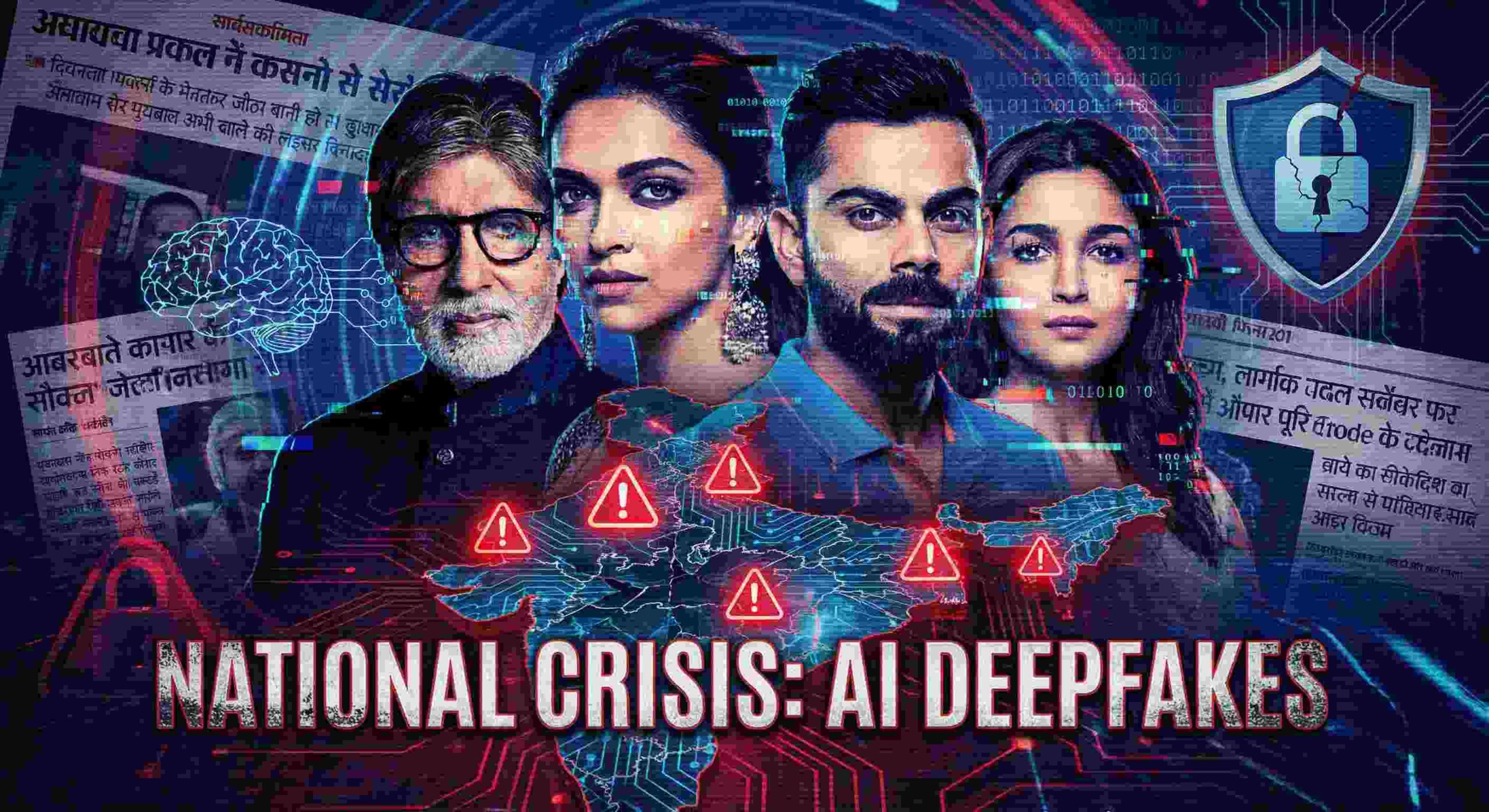I’ll search for current information about this deepfake crisis involving Indian celebrities.AI deepfakes have indeed become a significant crisis in India, affecting celebrities, ordinary citizens, and even democratic processes. Here’s what’s happening:
The Scale of the Problem
Recent research shows that 90% of Indians have encountered fake or AI-generated celebrity endorsements, with scam victims losing an average of ₹34,500. Shah Rukh Khan ranks as the most exploited celebrity in 2025, followed by Alia Bhatt and Elon Musk, whose likenesses are frequently used in AI-driven deepfakes to promote fake endorsements and scams.
How Scammers Operate
With just three seconds of someone’s voice, scammers can now create highly convincing deepfakes, often used to promote skincare products, giveaways, cryptocurrency schemes, and fake gadgets. In June 2025, a 79-year-old woman in Bengaluru lost ₹35 lakhs to scammers using deepfaked videos of N. R. Narayana Murthy to lure her onto a bogus trading site.
Beyond Financial Scams
The crisis extends beyond money. Actor Girija Oak spoke about how AI-generated obscene images of her have been circulating online, particularly impacting her 12-year-old son. In October 2023, Rashmika Mandanna’s face was grafted onto another woman’s body in a pornographic clip that spread rapidly across WhatsApp and Telegram.
Political Implications
Deepfakes have also entered India’s political arena. During the 2024 elections, AI-generated videos featuring Bollywood actors Aamir Khan and Ranveer Singh appeared to show them criticizing Prime Minister Modi and endorsing the opposition Congress party, raising concerns about election manipulation.
Legal Response
Several actors including Akshay Kumar, Aishwarya Rai Bachchan, Abhishek Bachchan, Amitabh Bachchan, and Hrithik Roshan have secured court protection against deepfakes and unauthorized use of their identities in recent months. The government has proposed amendments requiring platforms to label AI-generated content, though experts note that India currently lacks comprehensive deepfake-specific legislation.
How to Spot an AI Deepfake
As technology improves, detection becomes harder, but these signs often give them away:
- Unnatural Blinking: AI often struggles to replicate natural blinking patterns (either too much or none at all).
- Lip-Sync Issues: Audio-video lag or lip movements that don’t perfectly match the spoken words.
- Skin Texture: Look for “smoothness” or blurring, especially around the edges of the face, hair, and neck.
- Monotone Audio: Even if the voice sounds like the celebrity, the intonation often lacks the natural emotion or pauses of human speech.
Next Step
If you encounter a suspected deepfake, do not share it. You can report it immediately via the Chakshu facility on the Sanchar Saathi website (sancharsaathi.gov.in).

